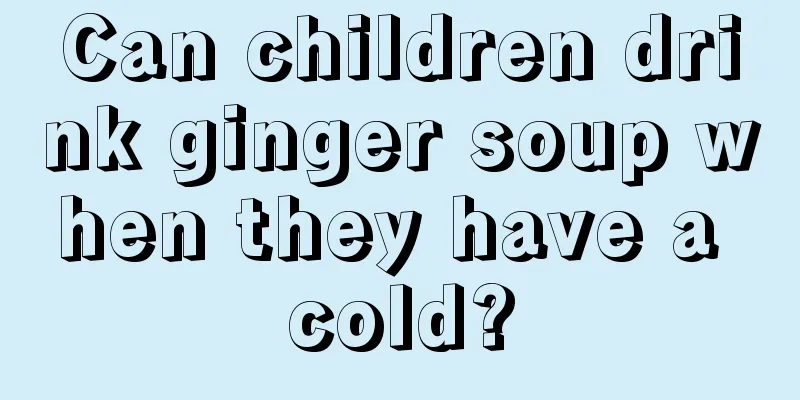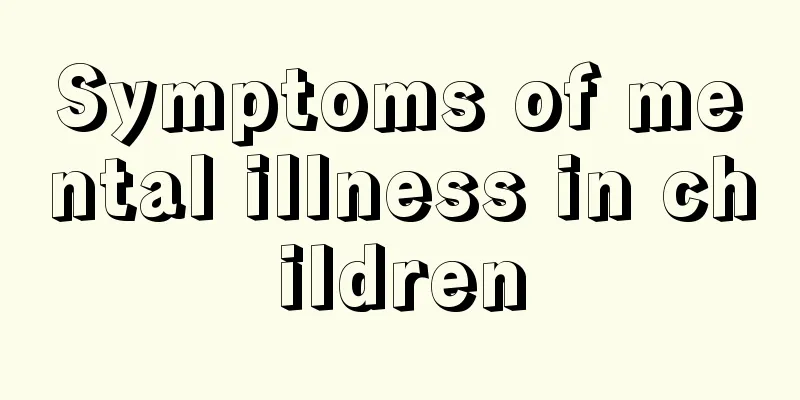Why does my child’s lips become swollen?

|
Because children's organs and body functions are not fully developed, they are less resistant to viruses and problems caused by climate change than adults, so children are more susceptible to illness. Swollen lips in children is a very common phenomenon. It may be caused by climate change, mosquito bites, viral infection, etc. The following is a detailed introduction on what causes swollen lips in children. Reason 1: Allergy This situation is considered to be caused by allergies in the child's mouth. In this case, the child needs to cooperate with an allergen test and the child should try to avoid contact with allergens. suggestion: Children can be given chlorpheniramine granules for anti-allergic treatment in combination with vitamin C and calcium gluconate to improve allergies and edema. If fever occurs, antipyretic drugs should be used. Reason 2: Getting angry If the condition of the child's mouth is considered to be caused by inflammation, you can go to the oral department of the hospital for a check-up. suggestion: Pay more attention to your child's diet. You can take Isatis Root Granules to clear away heat and detoxify. Drink plenty of water. Keep your child warm and avoid greasy and spicy food. Reason 3: Trauma A child's swollen mouth may be caused by external trauma. It is very easy for a child to have bumps and bruises during the growth process. It is very likely that the child's mouth is swollen due to accidental bumps. suggestion: If the child's mouth is swollen, we can first use a cold towel to simply apply cold compress to the child. This kind of cold compress can relieve the pain caused by the child's bumps and can also have some effect in reducing swelling. Cause 4: Angioedema If a child's lips swell up for no reason, it may be angioedema, which develops quickly and usually causes oral and facial edema within 1 to 2 hours. Local edema is most common on the lips. The swelling is mainly manifested as edema, which may be accompanied by itching or numbness. Generally there are no systemic symptoms. suggestion: Oral antihistamines can usually relieve symptoms (such as astemizole, Claritin, chlorpheniramine, and diphenhydramine). If these drugs cause drowsiness (which occurs in a few patients), non-sedating antihistamines such as astemizole can be used. If the reaction is more severe, glucocorticoids (such as prednisone 30-40 mg orally per day) can be used. Topical corticosteroids are of no value. Reason 5: Causes of angioedema 1. Genetic factors Some patients have a family history of the disease. However, regardless of the cause of angioedema, the final pathophysiological mechanism can be attributed to increased vascular permeability and excessive intravascular fluid exudation. Edema in any part of the body usually resolves itself within a few days. Drug treatment can accelerate the resolution and resolution of edema. 2. Autonomic dysfunction Under the influence of mental and physical factors, central and peripheral autonomic nervous system functions are disturbed, such as sympathetic nervous system dysfunction or parasympathetic nervous system hyperfunction. Edema in different parts of the body is related to the corresponding autonomic nerve segmental level, and systemic edema may be related to hypothalamic dysfunction. 3. Allergic reaction Some angioedema may be related to allergies. For example, food, drugs or certain substances in the environment can cause angioedema due to allergies. Reason 7: How to prevent angioedema Specific preventive measures for angioedema are described below: 1. Prevent possible inducements; 2. Prevent infection, strengthen physical exercise, enhance physical fitness, and improve self-immune function; 3. Early diagnosis and early treatment; 4. Actively treat the primary disease. Notice: There are no better preventive measures yet. If there is a background of hereditary syndrome, preventive measures include promoting genetic counseling, carrier gene testing, prenatal diagnosis, and selective abortion. |
<<: Why is there a red circle around my child's lips?
>>: How to treat hemangioma on a child’s face?
Recommend
The easiest way to treat a child's stuffy nose
Children often have nasal congestion problems. In...
Five steps to treat burns in children
Pediatric burns are relatively common, usually oc...
Treatment for babies who keep rubbing their noses
Now we may often find that there are many babies ...
Symptoms of precocious puberty in girls
The growth and development of babies follow certa...
What is the cause of vulvitis in young girls?
Many parents believe that girls do not need to pa...
What should you pay attention to when your baby drinks Yinzhihuang?
The incidence of neonatal jaundice is relatively ...
How to perform massage techniques on children with fever?
In fact, when a child has a fever, it is feasible...
Causes of breathing difficulties in children
Children are the apple of every parent’s eye. Whe...
Methods of memory training for junior high school students
The majority of young people who are in junior hi...
What should I do if a little girl has frequent and painful urination?
Frequent and painful urination is a very common p...
What are the benefits of children learning tennis?
Tennis is a sport that many people love very much...
Why does my child breathe heavily when sleeping?
When children sleep, their breathing is quite hea...
What is the treatment for children's upper respiratory tract infection and cough?
Children are prone to upper respiratory tract inf...
What to do if your baby has a runny nose after a fever
Every baby is the apple of his parents' eyes....
What to do if your child doesn't like to eat
Once there is a child in the family, the manifest...









